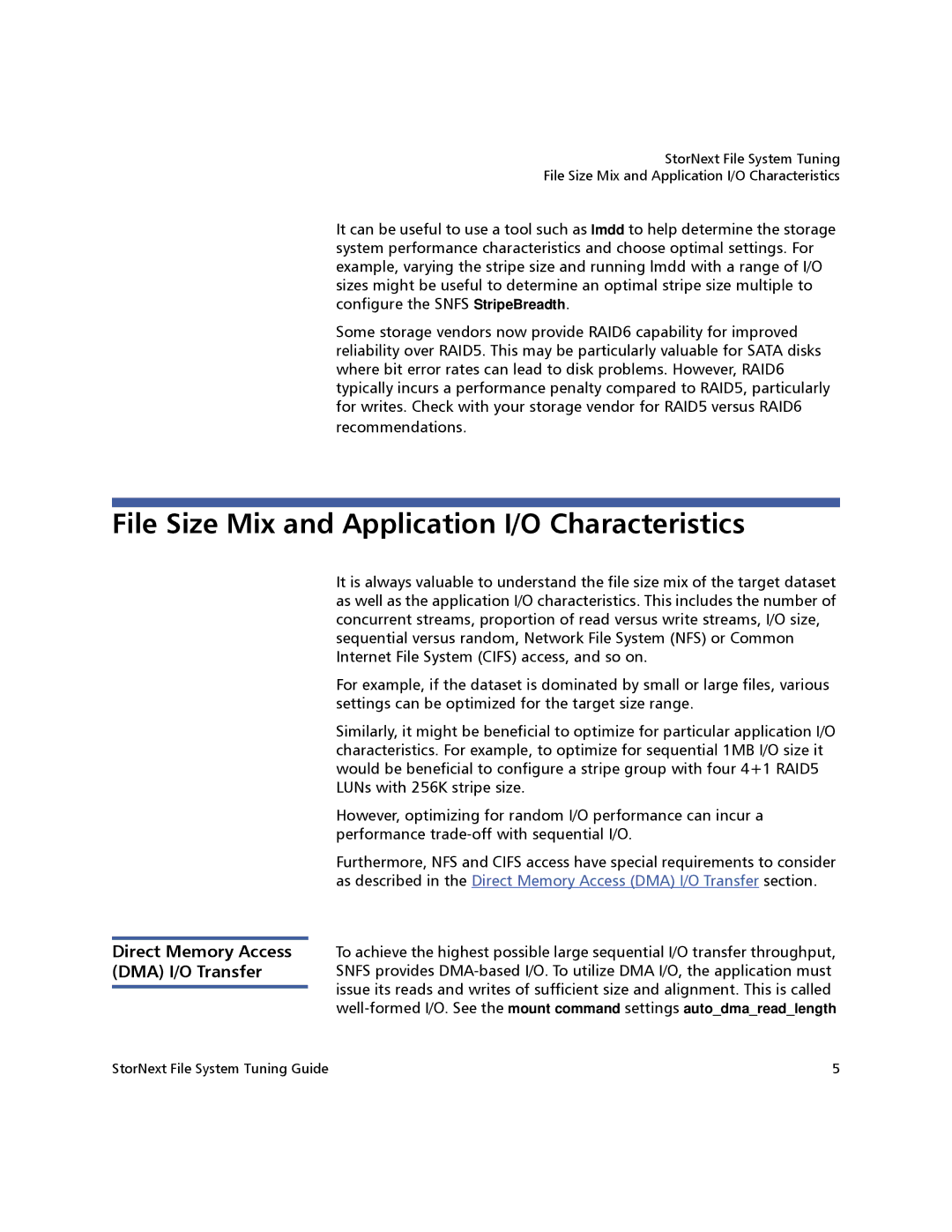
StorNext File System Tuning
File Size Mix and Application I/O Characteristics
It can be useful to use a tool such as lmdd to help determine the storage system performance characteristics and choose optimal settings. For example, varying the stripe size and running lmdd with a range of I/O sizes might be useful to determine an optimal stripe size multiple to configure the SNFS StripeBreadth.
Some storage vendors now provide RAID6 capability for improved reliability over RAID5. This may be particularly valuable for SATA disks where bit error rates can lead to disk problems. However, RAID6 typically incurs a performance penalty compared to RAID5, particularly for writes. Check with your storage vendor for RAID5 versus RAID6
recommendations.
File Size Mix and Application I/O Characteristics
It is always valuable to understand the file size mix of the target dataset as well as the application I/O characteristics. This includes the number of concurrent streams, proportion of read versus write streams, I/O size, sequential versus random, Network File System (NFS) or Common Internet File System (CIFS) access, and so on.
For example, if the dataset is dominated by small or large files, various settings can be optimized for the target size range.
Similarly, it might be beneficial to optimize for particular application I/O characteristics. For example, to optimize for sequential 1MB I/O size it would be beneficial to configure a stripe group with four 4+1 RAID5 LUNs with 256K stripe size.
However, optimizing for random I/O performance can incur a performance
Furthermore, NFS and CIFS access have special requirements to consider as described in the Direct Memory Access (DMA) I/O Transfer section.
Direct Memory Access To achieve the highest possible large sequential I/O transfer throughput,
(DMA) I/O Transfer SNFS provides
StorNext File System Tuning Guide | 5 |
